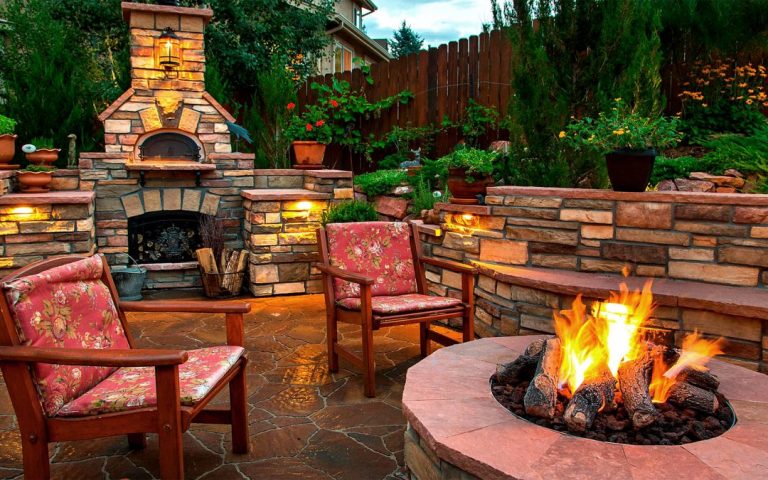How To Properly Mulch For A Garden
When it comes to mulching, there are several things you need to know. In this article, we’ll discuss the Dos and Don’ts of mulching and when to use organic or inorganic mulches. Besides learning the Dos and Don’ts of mulching, we’ll also discuss the benefits of mulch and what type of material works best for your garden. To get started, you can browse through our mulching tips.
Dos and Don’ts of mulching
There are many advantages of mulching for your garden. It suppresses weeds and reduces dust and erosion while also creating a neater look to your garden space. Mulch helps insulate soil and protect plant roots from extremes of temperature. Even moisture levels help plants grow healthier and resist pests. Here are a few important dos and don’ts of mulching for a garden.
Regardless of whether you’re an experienced homeowner or just trying to improve your gardening skills, there are a few things you should consider before beginning a mulching project. First, consider the time you have available. The best way to accomplish this is to take a weekend. Make sure you have a clear idea of the time you can spend on mulching your garden and decide on the color and type of mulch.
The Dos and Don’ts of mulch for a garden are based on your own unique needs and circumstances. When laying down mulch on your garden, remember to warm the soil sufficiently before applying mulch. In addition, mulch weighs more than soil when it is completely wet, so make sure you’re ready to move it into place. When mulching your garden, make sure you remove any plastic or newspaper that is covering your soil. This prevents water from reaching the roots of your plants and will prevent weeds from regrowing.
One of the most common mistakes people make when mulching their garden is ignoring the weed control aspect. When you’re mulching your garden, make sure you use a mulch with a three to four-inch thickness. However, depending on the type of mulch, this thickness may vary. A good rule of thumb is to use three to four inches of mulch for your shrubbeds.
The Dos and Don’ts of mulch for a garden are different for flower beds and vegetable gardens. A vegetable garden requires a lot of turn over in order to grow properly, so you may want to use a lighter-weight organic mulch for your vegetables. Whether you’re using a light-colored or dark-colored mulch, mulching your garden is an effective way to boost the growth of new plants.
Dos and Don’ts of applying mulch
When applying mulch to a garden, it is important to do it properly. Mulch is a natural soil conditioner that allows moisture to permeate and nutrients to seep into the soil. However, it can also serve as a weed-growth medium. If you are concerned that mulch is causing weeds, you can apply a weed-prevention product like Preen Garden Weed Preventer after you have applied the mulch. You should also keep in mind that a deep layer of mulch can prevent oxygen from reaching the soil and suffocate the roots.
Apply mulch around trees and other plants in your garden with sufficient spacing to avoid suffocating their roots. If you do this, you’ll likely encourage weeds, and a thin layer of mulch will be unable to provide adequate insulating properties. Make sure to keep the layer of mulch a couple of inches thick around each plant, if possible. To protect your plants from the dangers of weed seeds, keep mulch away from the stems of trees.
When applying mulch for a garden, it is important to keep in mind the following tips: Choose pest-free mulch. Avoid mulch that stinks, as it can attract insects. You should avoid using wood chips that are teeming with insects. Insect-free mulch will also help maintain the soil’s temperature. If you’re considering using mulch to enhance the appearance of your lawn, make sure to choose mulch that suits your landscape theme and setting.
Once you’ve chosen the right type of mulch for your garden, it is time to choose a method for application. Organic mulches include chopped leaves and pine needles. Organic mulches also add nutrients to the soil. While most people use organic mulches, there are some people who like to use plastic or geotextiles. However, it’s best to ask a landscape professional before you apply mulch to your garden. Also, make sure that you don’t use too much mulch. If you don’t know how much mulch to apply, you might be able to make mistakes and end up drying out the soil.
Organic mulches should be made from natural materials like wood and bark. You should avoid colored wood and rubber mulch as these can seep through and contaminate the soil. Water should be removed before applying colored mulch. During the application process, you should apply colored mulch in dry weather to prevent any problems. Always remember that mulch has its own lifespan. Once applied, mulch can last for years, but it’s best to replace it periodically.
Organic vs inorganic mulches
There are many benefits to using organic mulch on your garden. As this material decomposes, it releases valuable nutrients into the soil. Organic mulch also improves the structure and quality of the soil. If you are looking for an alternative to organic mulch, consider using rock or stone. They are non-flammable and are also easier to remove. But what is the best type of mulch for your garden?
There are three different types of mulches: organic and inorganic. The difference between these two types of mulch is primarily in the composition. Organic mulches are composed of living materials, such as wood, bark, or compost. They also help feed soil organisms and keep the soil warm during winter. Inorganic mulches are made from rocks, lava rocks, crushed stones, or other materials that will decompose into a compost.
Plastic mulch is useful for warm-weather plants, like tomatoes and peppers. It also suppresses weeds during the growing season. Plastic mulch is also costly to the environment and gets thrown away at the end of the season. It also has limited recycling facilities. It also can suffocate beneficial insects, which are necessary for good health and beauty. The final decision will depend on your needs.
The main difference between organic and inorganic mulch is its longevity. Inorganic mulch does not break down quickly and can look great for decades. On the other hand, organic mulch needs to be replaced every two to three years. Besides, the cost of inorganic mulch is much higher than the cost of organic mulch. However, it is still cheaper than the cost of the most expensive organic mulch.
Using gravel is a great idea if you want to create a natural look in your yard. Gravel is a great option for xeric beds, while stone chips and coarse grit are perfect for rock gardens. Crushed granite or gravel are great for containers and will not cause root rot to your plants. Besides being beautiful, rock mulch is also inexpensive, and one to one and a half inch layer should be enough. You can also match your container to the mulch, which will show off your creativity.
When to apply mulch
While spreading mulch in the garden may sound like a simple task, you should keep in mind that it is more complicated than you might think. Properly applied mulch will create a beautiful landscape and help protect plants from insects. Read on for tips on how to spread mulch. A good mulching method is to use a wheelbarrow to spread mulch evenly over the entire area of the garden. Before spreading mulch, it is important to rinse the area thoroughly. Apply mulch to the garden when the ground is dry and avoid watering it while it is still wet.
You can use composted plant parts for mulch in the garden. These materials are more beneficial to perennial plants than coarse wood chips or bark. Wood chips are okay for large shrubs and woody plants, but they won’t help herbaceous plants as much. Use wood chips or composted leaves if you have the space for them. They are the best mulches for flower beds, but don’t use wood chips if you want to protect your vegetable garden plants.
If you’re starting a new garden area, it’s a good idea to clear the surface of weeds and debris before you begin planting. In addition to grass clippings, you should also cut back your weeds to the ground before applying mulch. Pine needles make a great mulch as they last a long time and help acidify the soil. When applying mulch, be sure to plan ahead and measure accordingly.
You can apply mulch to new plantings in mid-late spring or autumn. Mulching around newly planted plants or specimen plants will help keep weeds under control and preserve moisture. You can also mulch an entire bed or just a portion of it. Remember to make sure to place a barrier between the mulch and the woody plants. After mulching, make sure to add some more. So, be sure to read all of the instructions carefully and follow them as closely as possible.
Before applying mulch, remove any weeds from the garden. If you cannot do this, cut off the weeds. You should apply mulch that stops sunlight, but not so thick that it harbors pests. If you put mulch against the stems or trunks of plants, it may encourage the development of diseases and rot. Therefore, it is important to carefully measure the area and record the results. This will ensure that the mulch does not bury the plants and does not create a nesting area for insects.



